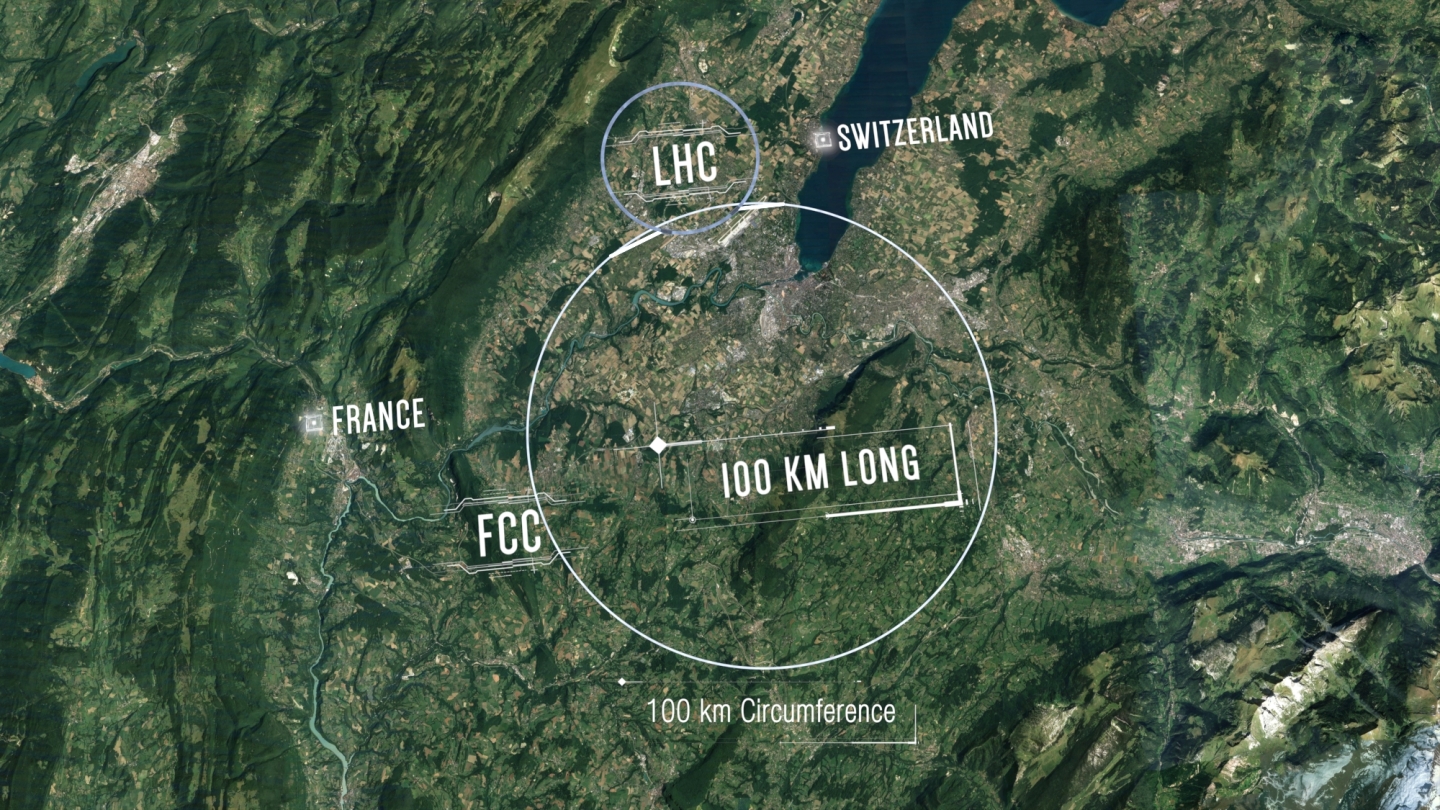CERN, the European Organization for Nuclear Research, wants to build a particle collider that will dwarf the Large Hadron Collider (LHC). The LHC has made important discoveries, and planned upgrades to its power ensures it will keep working on physics problems into the future. But eventually, it won’t be enough to unlock the secrets of physics. Eventually, we’ll need something larger and more powerful.
Enter the Future Circular Collider (FCC.) The FCC will exceed the LHC in power by an order of magnitude. On January 15th, the FCC collaboration released its Conceptual Design Report (CDR) that lays out the options for CERN’s Future Circular Collider.
The FCC is part of CERN’s roadmap for their future. In 2014, CERN started studying the FCC concept in preparation for life after the LHC. The LHC isn’t going anywhere anytime soon, in fact it’s being upgraded right now. But there’s a limit to what it can do, and a limit to how powerful it can be. Eventually it will require a successor.
CERN Press Release, January 15th, 2019.
“The FCC would provide electron-positron, proton-proton and ion-ion collisions at unprecedented energies and intensities… “
Right now, this report is all about strategy and process. According to a CERN press release, Europe should “be in a position to propose an ambitious post-LHC accelerator project at CERN by the time of the next Strategy update”. It also says, “The FCC would provide electron-positron, proton-proton and ion-ion collisions at unprecedented energies and intensities, with the possibility of electron-proton and electron-ion collisions.”
“The FCC conceptual design report is a remarkable accomplishment. It shows the tremendous potential of the FCC to improve our knowledge of fundamental physics and to advance many technologies with a broad impact on society”, said CERN Director-General Fabiola Gianotti. “While presenting new, daunting challenges, the FCC would greatly benefit from CERN’s expertise, accelerator complex and infrastructures, which have been developed over more than half a century.”
The announcement focuses in on the discovery of the Higgs-Boson at the LHC. That was a remarkable discovery, and one that was long-predicted by theory. But there’s a lot we still don’t know about the Higgs-Boson, and understanding it will require a more powerful particle collider than the LHC. Physicists think that the Higgs-Boson could open a whole new door into physics, but to open that door requires a more powerful particle collider.
The FCC proton collider would use new-generation superconducting magnets and would provide a lot of new opportunities to study physics. It’s designed to perform at energies of 100 TeV and higher, which means it would allow study of Higgs particles interacting with each other with extreme precision.
The new particle collider will also use its power to probe dark matter, to try and understand the prevalence of matter over anti-matter, and to try to explain neutrino masses.
It could even find new massive particles, and would allow thorough exploration of the role of the electroweak-symmetry breaking in the history of our universe. The FCC would also collide heavy ions, sustaining a rich heavy-ion physics programme to study the state of matter in the early universe.

Artistic impression of a collision event at the centre of a future detector following preliminary design studies. Image Credit: CERN.
If built, the FCC would be in the same spot as the LHC, the Geneva Basin. The new particle collider would be between 80 to 100 km (50 to 62 miles) in diameter.
“The FCC’s ultimate goal is to provide a 100-kilometre superconducting proton accelerator ring, with an energy of up to 100 TeV, meaning an order of magnitude more powerful than the LHC”, said CERN Director for Accelerators and Technology, Frédérick Bordry. “The FCC timeline foresees starting with an electron-positron machine, just as LEP preceded the LHC. This would enable a rich programme to benefit the particle physics community throughout the twenty-first century.”
“Proton colliders have been the tool-of-choice for generations to venture new physics at the smallest scale. A large proton collider would present a leap forward in this exploration and decisively extend the physics programme beyond results provided by the LHC and a possible electron-positron collider.” said CERN Director for Research and Computing, Eckhard Elsen.

The new particle collider would be a massive engineering project. The projected cost is in the 9 billion Euro range for a 100km tunnel. If all goes according to plan, it would begin its physics program in 2040, right at the end of the High-Luminosity LHC. At first, the particle collider would operate as an electron-positron collider, and serve the physics community for 15 to 20 years. Then, it would be turned into a superconducting proton machine, using the same tunnel, in the late 2050s. That would cost an additional 15 billion Euros.

When built, the new particle collider will become the world center for particle physics research, the same way the LHC has. It will be a driver for innovation in engineering, technology, science, and industry. It will also train the next generation of physicists and researchers.


9 billion Euros? I’m predicting that it will be much higher.